This post may contain affiliate links. Please read our disclosure policy.
A sourdough panettone bread recipe that is soft, light and full of flavor! Traditional panettone takes a little time and patience, but the resulting bread is worth it.
You can either have a quick panettone recipe or the best. This is the best.

Panettone is a sweet bread served in Italy for Christmastime! These decadent loaves are baked in special, decorative panettone paper molds, which make them great for holiday gifts! Consider gifting it alongside the best stollen bread or a selection of homemade jams like mixed berry jam and pumpkin butter or apple butter.
The texture is similar to a buttery brioche bread but the flavor has the complexities of sourdough (like my sourdough raisin bread) along with soaked dried fruits and candied citrus!
Table of Contents
Why This is the Best Panettone
- Soft, flavorful brioche-like bread with dried fruits and candied citrus.
- Layers of flavor built at every step. Soaking the raisins, candied fruits and zest in advance adds moisture and flavor to the final dough. Creating a strong levain adds more sourdough flavor, stronger gluten and more rise. The dough is enriched with egg yolks (a lot!), butter, sugar, and a little honey.
- Uses a sourdough starter in place of a biga. Many panettone recipes call for using active dry yeast to make a preferment called a biga, which adds flavor and complexity, but nothing can replace the texture and flavor of sourdough. Here is my sourdough starter recipe if you want to start one!
- Easier than you think! Don’t be discouraged by the ingredient list or the multi-day process. It is a simple bread to make and an easy dough to handle with very little hands-on time.
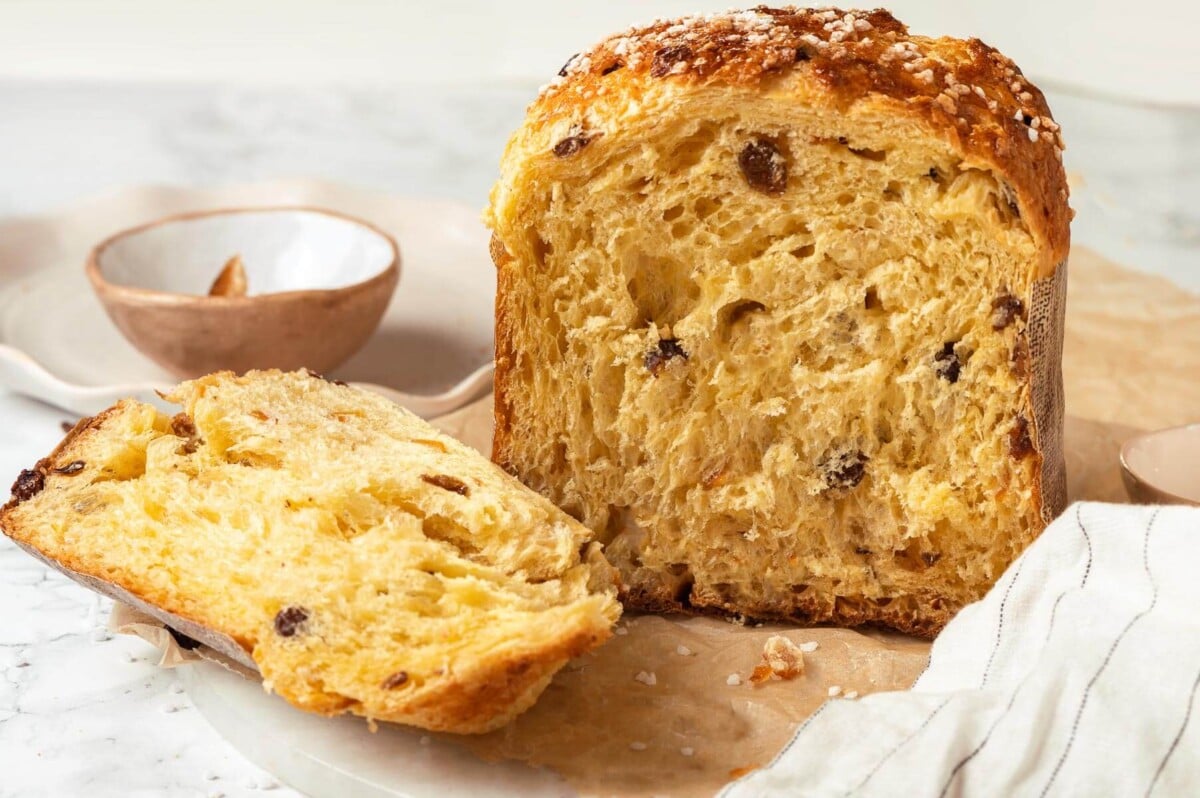

Ingredients & Substitutions

- Dark Raisins: Just like in my raisin bread recipe, besides dark raisins, you could also use currants, dried cherries, cranberries, chopped dried apricots or a mix of several dried fruits.
- Candied Orange Peel & Candied Lemon Peel: Purchase high quality candied orange peel and lemon peel or make your own candied citrus peels.
- Orange & Lemon Zest: Adding orange zest and lemon zest to the soaker really heightens the flavor. You could use the juice in place of the water, if desired. Just be sure to measure it!
- Water: There is water in the soaker and also in levain build, but not in the final dough mix! Trust in the process!
- Vanilla Extract
- Bread Flour: I used bread flour for a little additional gluten content in the levain build but you could also use all-purpose flour if that is what you have on hand or you simply do not feel like getting out another ingredient!
- Active Sourdough Culture: You can make this same recipe without a sourdough starter but you will want to use a preferment called a “poolish”. A poolish has equal parts flour and water plus double the dry active yeast and it ferments for 4-18 hours. This long fermentation mimics a bit of the complexity of the natural yeast. It also adds extra gluten like a sourdough starter. You’ll want to start this in the morning of Day 1 when you mix the soaker. In order to preserve the ratios in this recipe, I recommend using a poolish over a stiffer biga. The concept and the benefits are similar, but a biga is a stiffer dough rather than a loose sponge.
- All-Purpose Flour
- Egg Yolks: Yes, you read the recipe right! It does call for the yolks from about 10 large eggs. Save those egg whites for an omelet, angel food cake, marshmallow fluff, marshmallow frosting, marshmallows made with egg whites, or Italian meringue buttercream. You can even freeze the egg whites in a freezer safe container for later use.
- Instant Yeast: I use instant yeast to eliminate the blooming step needed to activate active dry yeast. The difficulty in this recipe is that there is no additional liquid in the final dough with which to bloom the yeast.
- Kosher Salt
- Sugar: Granulated sugar adds sweetness but will also add moisture and keep the bread fresh for longer.
- Honey
- Diastatic Malt Powder: Diastatic malt Powder separates this professional recipe from many other recipes on the internet. Diastatic malt powder has live enzymes in it that break down the complex carbohydrates into simple sugars which are readily accessible to yeast. Malt is also a type of sugar itself. This adds to the flavor but also aids in the fermentation process. Simply omit it, if you do not have or do not care to use it!
- Unsalted Butter
- Belgian Pearl Sugar: Before baking I brush the loaves with egg wash (just beaten egg) and top with Belgian pearl sugar or Swedish pearl sugar. It adds a festive sparkle and crunch.
See the recipe card for full information on ingredients and quantities.
Variations
- Use juice or alcohol for soaking the dried and candied fruit: Some recipes call for soaking the dried fruit in brandy or another alcohol. That is also delicious as is orange juice or even apple cider for an unexpected, modern take. In bread school we let the soaker sit for 2 weeks, which felt like an eternity, but taking extra time at each step does develop more flavor.
- Make some additions or swaps for the soaker: Add in some pistachios or chopped blanched almonds along with the soaker. Chocolate chips are also a great addition, but if using, do not add them to your soaker. Instead add them along with the soaker in the final dough.
- Make mini panettones: Divide the dough in 30g pieces and shape like dinner rolls. Proof in individual panettone papers!
Professional Tips
- Use a stronger levain build to develop more flavor & gluten faster. This is not a standard sourdough starter build. It is a lot ”stronger” in the sense that the weight of the active culture is 150% of the weight of the flour. Typically it is only 10%. This will add more sourdough flavor and structure to the dough without adding a lot of time.
- Multiple options for baking and mixing. I include instructions for making this bread without a sourdough starter along with easy ways to decrease the timeline from 3 days to 1 day if desired. Each step adds to the flavor and texture but this panettone will still be delightful even if made in one day.
- Cool the panettone upside down. This step is not 100% necessary, but traditionally hot panettones are stabbed with skewers right through their papers and cooled upside down on speed racks. You can mimic this professional set up by balancing this stainless steel pin between two tall cookbooks, vases or anything else you can find!
2-3 Day Panettone Baking Timeline
This is just a suggested timeline based on typical rising times. Your loaves might be different because your environment is different from mine or a controlled bakery. The most important thing to remember is not to stress about it.
Day 1:
In the morning – Mix all the ingredients for your soaker. To save time, you could also warm the water or juice and mix the soaker when you mix the levain (sourdough starter). The soaker can be mixed up to two weeks in advance, or even longer if using alcohol.
In the evening – Feed your sourdough starter to make sure it is active when mixing the levain build tomorrow.
Day 2:
9:00 AM – Mix the sourdough levain build. Let ferment for 5 hours in a warm spot.
2:00 PM – Mix the panettone dough. Proof at room temperature for 1 hour.
3:30 PM – Cover the top of the panettone mold paper with plastic wrap and refrigerate overnight. This will develop the best flavor. You can also final proof the same day for 4-5 hours in a warm spot before baking.
Day 3:
8:00 AM – Remove the panettone from the refrigerator and proof for 3-4 hours at room temperature until the top of the dough reaches the edge of the mold.
12:00 PM – Egg wash and bake panettone according to recipe instructions!
How to Make Panettone
Use these instructions to make the best traditional panettone, an Italian Christmas bread, recipe! Further details and measurements can be found in the recipe card below.
Step 1: Mix the soaker: Combine all the ingredients for the soaker in a covered container. Mix to moisten and set aside at room temperature. Let sit overnight or longer, shaking or stirring every few days.
Step 2: Build the levain: Five hours before you want to mix the dough, feed the starter in the ratio listed above. You can either make the exact amount listed and feed your starter separately or make 1.5-2x the amount above to ensure you have enough left over to feed. Let ferment 5 hours in a warm spot (85°F) or longer if it is cooler.
Mix the dough:
Step 3: In the bowl of a stand mixer fitted with the dough hook attachment, combine all-purpose flour, levain, egg yolks, instant yeast, salt, honey, and diastatic malt powder. Mix on low to combine then develop some gluten on medium speed before slowly adding in the sugar in batches.

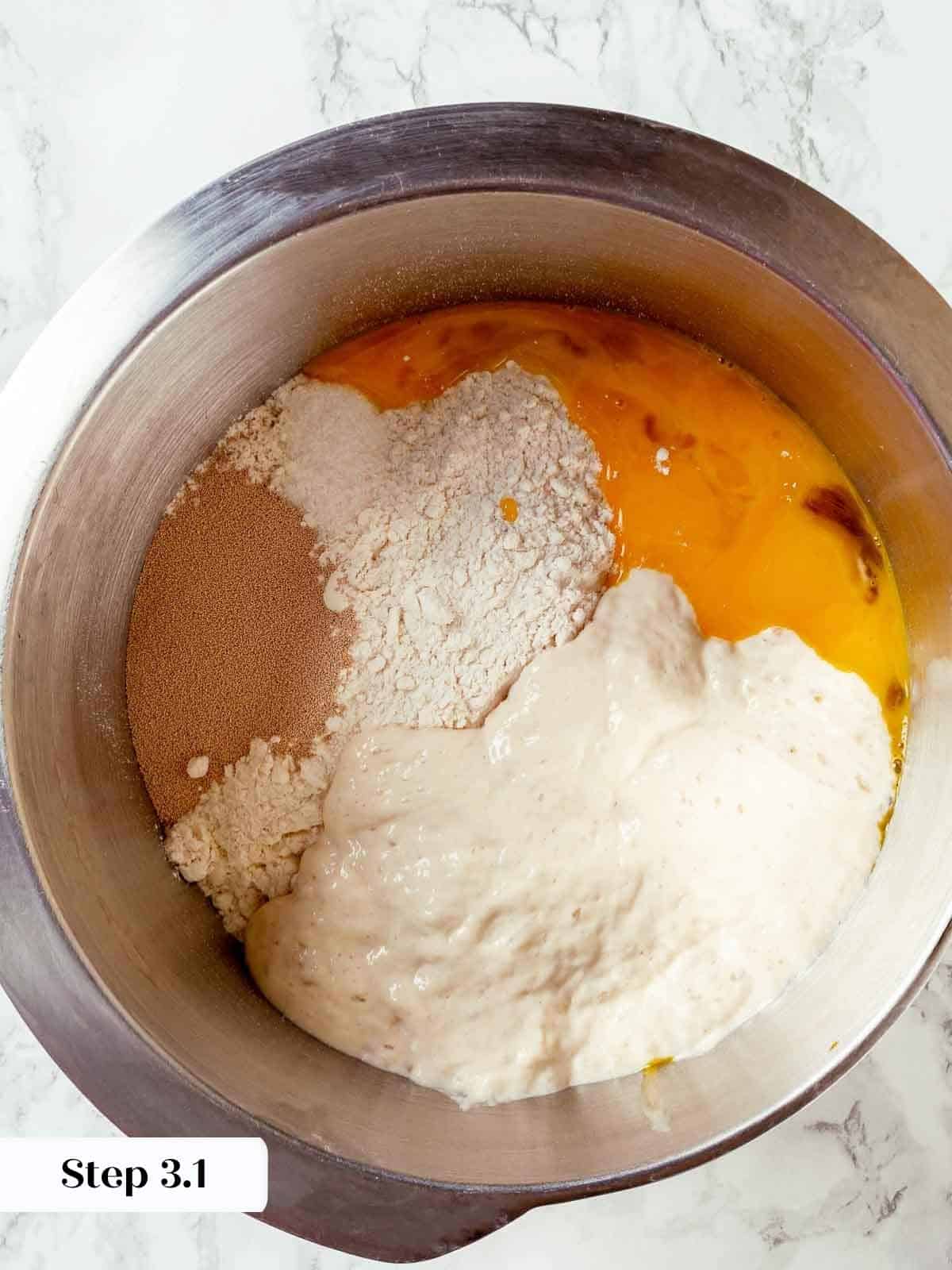

Step 4: Once the sugar is incorporated, add the room temperature butter.
Step 5: Once the butter is incorporated, add the soaker and mix in on low speed.
Step 6: Turn out into an oiled bowl, cover and bulk ferment (proof) for 4-5 hours in a warm spot (85°F) or longer if it is cooler.
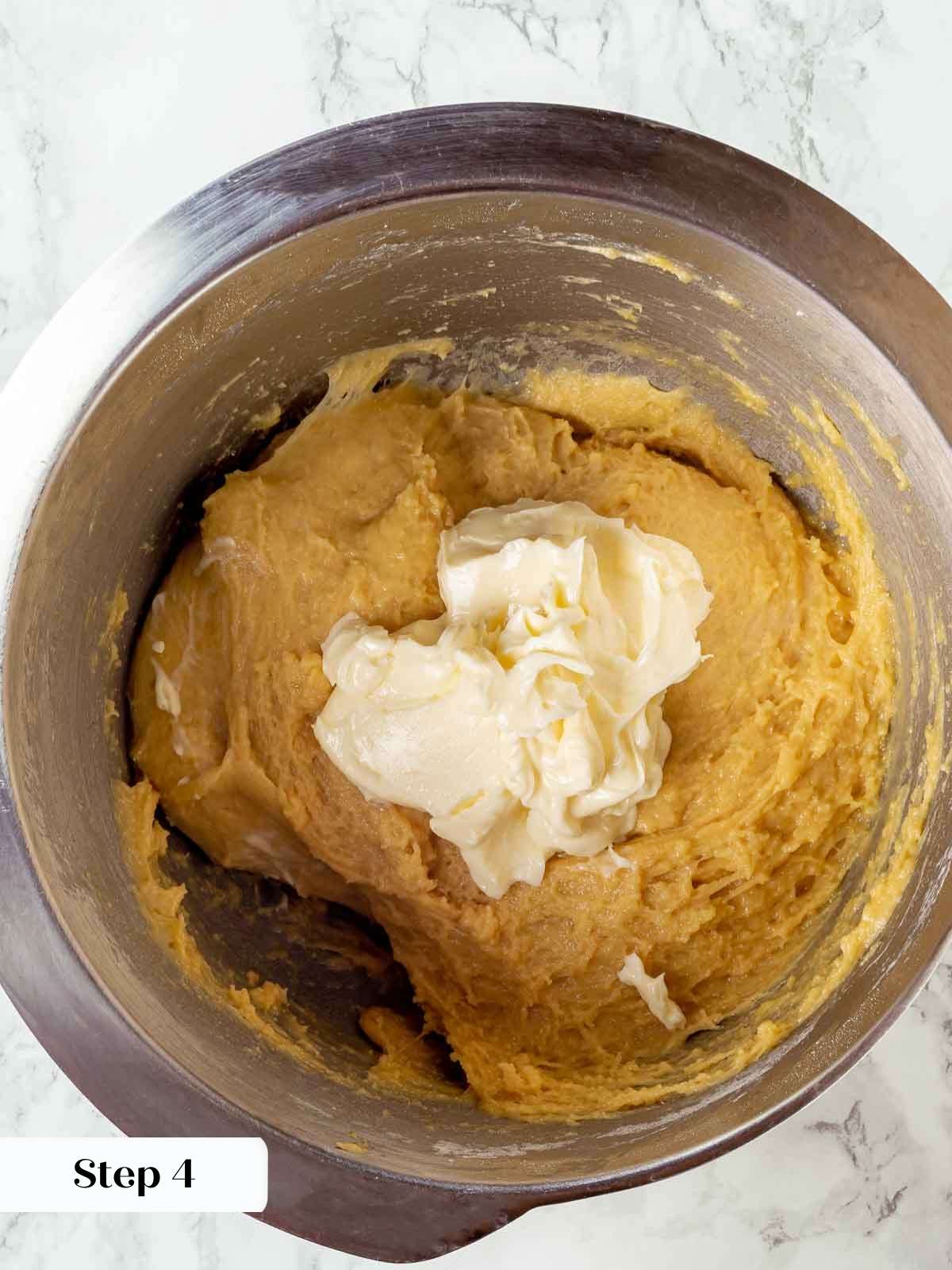
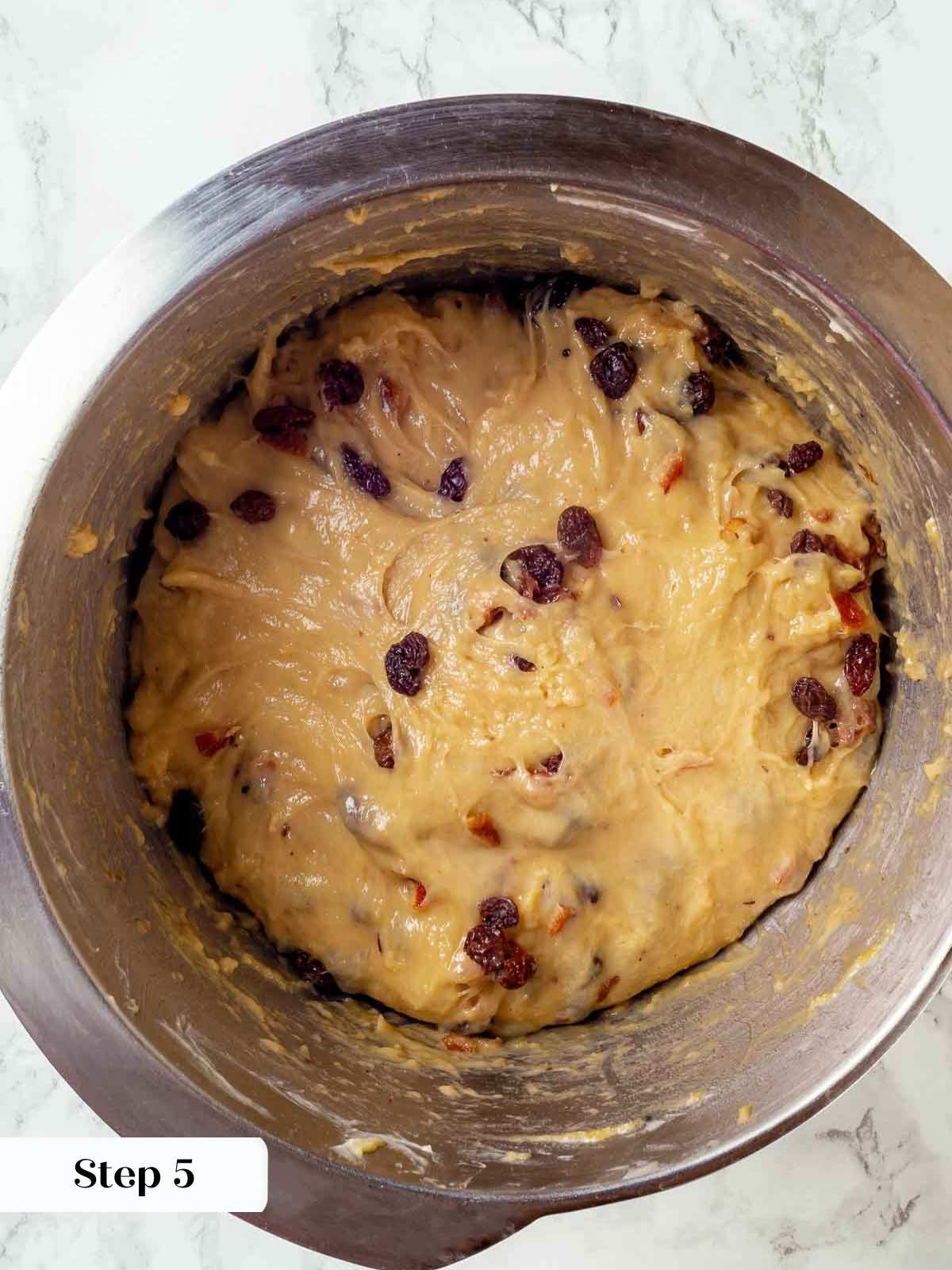

Step 7: Pre-shape round by folding all 4 corners into the center, flipping it over (seam side down) and tightening into a ball by pulling towards you with both hands. Cover with plastic wrap and let it bench rest 10-15 minutes to relax the gluten.



Step 8: Final shape into a round boule by flipping the seam side up, folding all 4 corners into the center. Flip it back over seam-side down and tighten into a ball with a smooth top by pulling towards you with both hands.
Step 9: Place each boule seam-side down in panettone papers. You can final proof in a warm spot for 4-5 hours or until the dough reaches the top of the panettone paper, or, for the best flavor, proof at room temperature for 1 hour and then refrigerate, covered, overnight.



Step 10: If you proofed the panettone in the refrigerator overnight, you will then want to final proof for 3-4 hours at room temperature.
Step 11: Preheat the oven to 350°F, and once the dough has risen to the top edge of the panettone papers, beat an egg until loose and liquidy. Gently brush the top of the dough with the egg wash and sprinkle on Belgian pearl sugar crystals if desired.
Step 12: Bake in a preheated oven at 350°F for 40-45 minutes. The internal dough temperature should be 185°F.


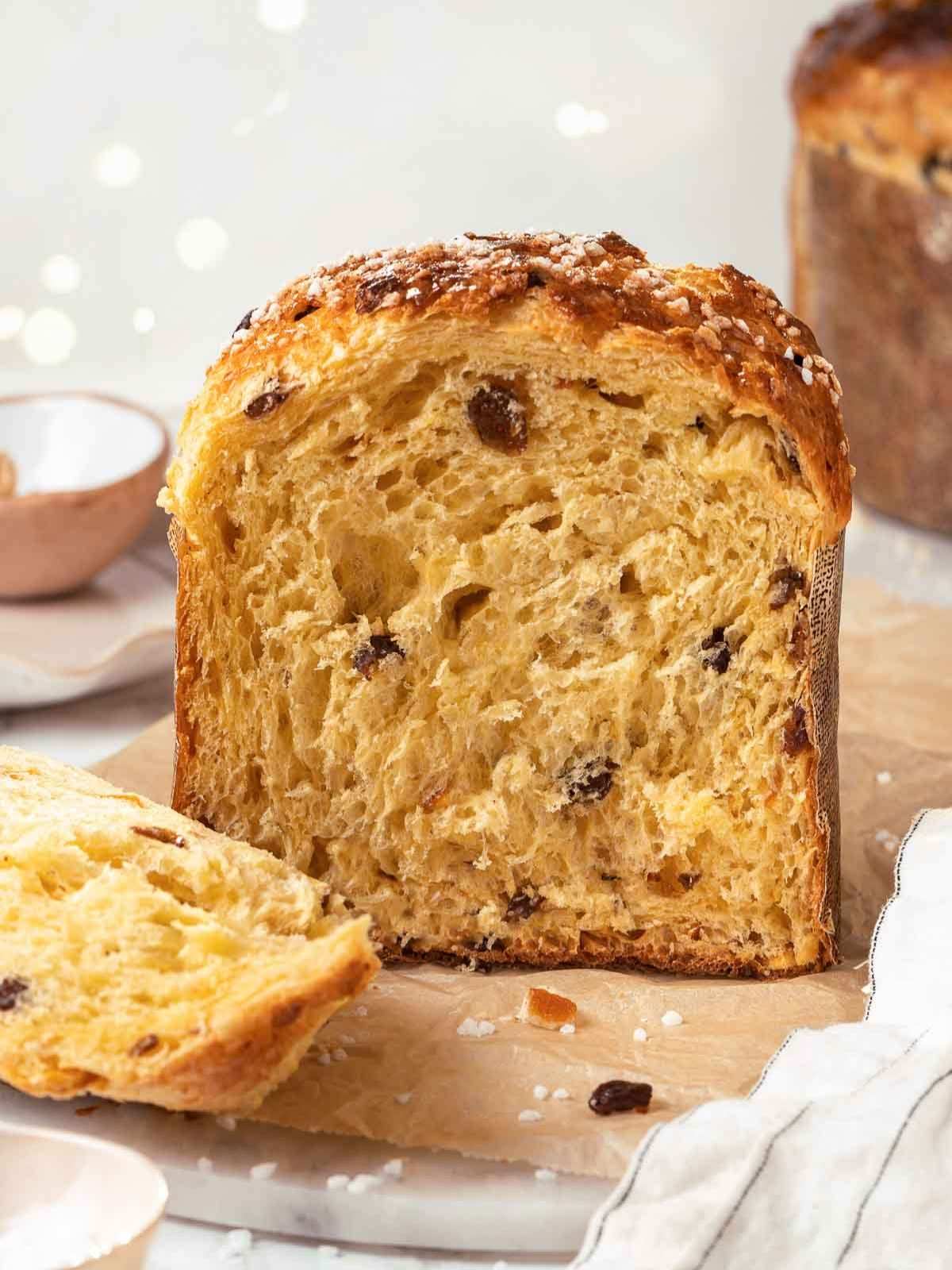
Chef Lindsey’s Recipe Tip
Cut slices right through the paper! It makes for a pretty presentation and also removing the paper before slicing can be a challenge.
Recipe FAQs
Store well wrapped panettone at room temperature for up to 7 days, but I do find that it slowly loses moisture over that time. Alternatively you can freeze the baked and cooled loaves well wrapped in plastic wrap for up to 2 months.
Leftover panettone is delightful served toasted with butter and jam or a dusting of powdered sugar, but you could also use it to make cinnamon raisin French toast or in place of the brioche bread in this easy bread pudding recipe!
Panettone is a bread unlike kugelhopf, which has the texture of a cake leavened with yeast. Panettone is chewy and soft and appropriately bready with more inclusions!
Serve panettone as a dessert with coffee or tea, or serve it toasted with butter as a breakfast or afternoon treat! You could also serve panettone with a dipping sauce like crème anglaise, salted caramel sauce or even hot fudge sauce!

Recommended Bread Recipes
Sourdough Bread Recipes
Sourdough Raisin Bread
Homemade Bread Recipes
Potato Bread
Easy Quick Bread Recipes
Traditional Irish Soda Bread with Raisins
Sourdough Bread Recipes
Basic Sourdough Bread Recipe
If you tried this recipe and loved it please leave a 🌟 star rating and let me know how it goes in the comments below. I love hearing from you; your comments make my day!

Panettone
Ingredients
Soaker
- 121 g dark raisins
- 39 g candied orange peel
- 39 g candied lemon peel
- ½ orange zested
- 1 lemon zested
- 78 g water or you can use the juice from the citrus above
- ¼ teaspoon vanilla extract
Levain Build
- 62 g bread flour or ap flour
- 62 g water
- 93 g active sourdough culture
Final Dough
- 375 g all-purpose flour
- 216 g levain all the levain build from above
- 225 g egg yolks approximately 10 eggs
- 1 ½ teaspoons instant yeast
- 1 ¼ teaspoons kosher salt
- 120 g granulated sugar
- 1 teaspoon honey
- 5 g diastatic malt powder
- 113 g unsalted butter
- soaker from above
- Belgian pearl sugar for topping
- egg for topping
Instructions
- Mix the soaker: Combine all the ingredients for the soaker in a covered container. Mix to moisten and set aside at room temperature. Let sit overnight or longer, shaking or stirring every few days.
- Build the levain: Five hours before you want to mix the dough, feed the starter in the ratio listed above. You can either make the exact amount listed and feed your starter separately or make 1.5-2x the amount above to ensure you have enough left over to feed. Let ferment 5 hours in a warm spot (85°F) or longer if it is cooler.
Mix the dough:
- In the bowl of a stand mixer fitted with the dough hook attachment, combine all-purpose flour, levain, egg yolks, instant yeast, salt, honey, and diastatic malt powder. Mix on low to combine then develop some gluten on medium speed before slowly adding in the sugar in batches.
- Once the sugar is incorporated, add the room temperature butter.
- Once the butter is incorporated, add the soaker and mix in on low speed.
- Turn out into an oiled bowl, cover and bulk ferment (proof) for 4-5 hours in a warm spot (85°F) or longer if it is cooler.
- Pre-shape round by folding all 4 corners into the center, flipping it over (seam side down) and tightening into a ball by pulling towards you with both hands. Cover with plastic wrap and let it bench rest 10-15 minutes to relax the gluten.
- Final shape into a round boule by flipping the seam side up, folding all 4 corners into the center. Flip it back over seam-side down and tighten into a ball with a smooth top by pulling towards you with both hands.
- Place each boule seam-side down in panettone papers. You can final proof in a warm spot for 4-5 hours or until the dough reaches the top of the panettone paper, or, for the best flavor, proof at room temperature for 1 hour and then refrigerate, covered, overnight.
- If you proofed the panettone in the refrigerator overnight, you will then want to final proof for 3-4 hours at room temperature.
- Preheat the oven to 350°F, and once the dough has risen to the top edge of the panettone papers, beat an egg until loose and liquidy. Gently brush the top of the dough with the egg wash and sprinkle on Belgian pearl sugar crystals if desired.
- Bake in a preheated oven at 350°F for 40-45 minutes. The internal dough temperature should be 185°F.
Notes
Nutrition
Before You Go
I hope you enjoyed this professional chef created recipe. Check out our other bread recipes or plan your holiday cookie baking with the best Christmas cookies, these easy Christmas cookie recipes, or traditional Christmas cookie recipes!




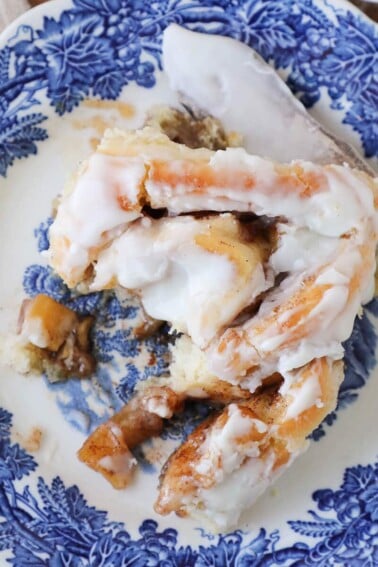
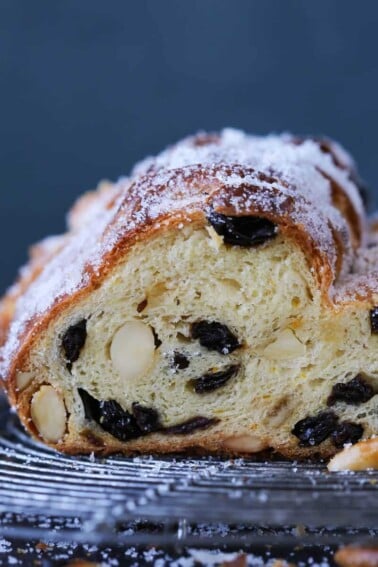
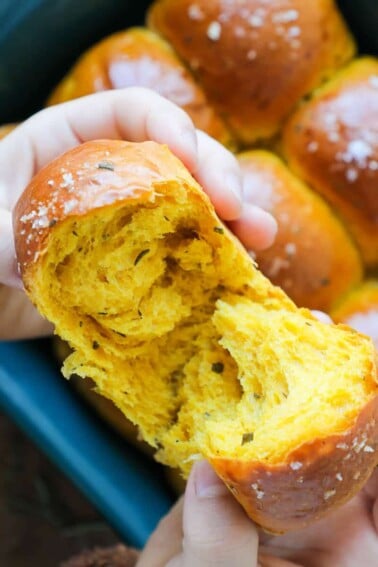













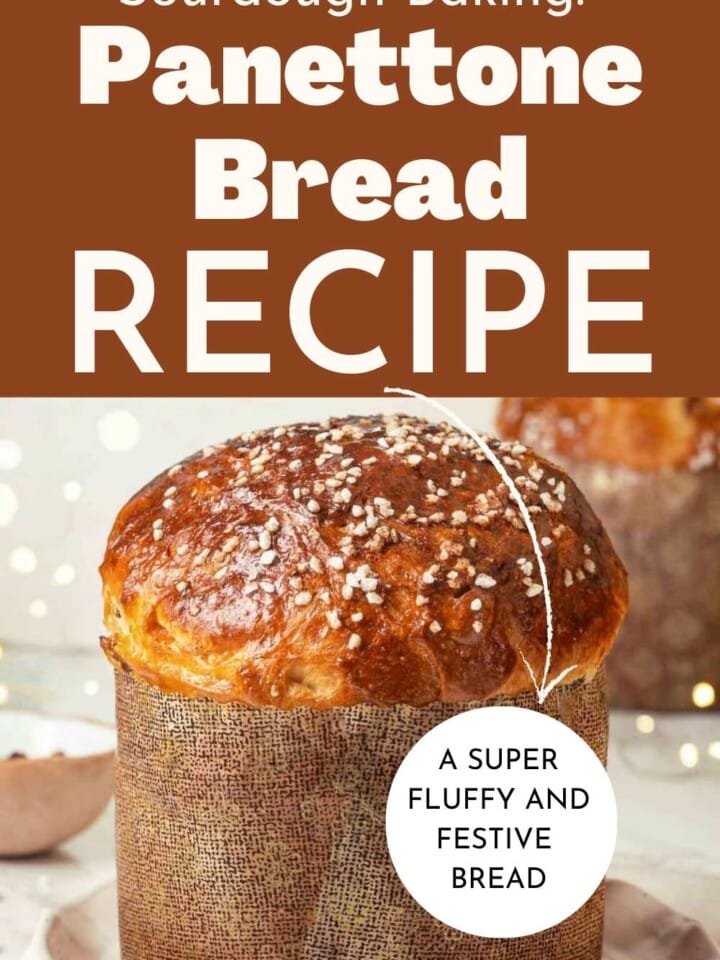
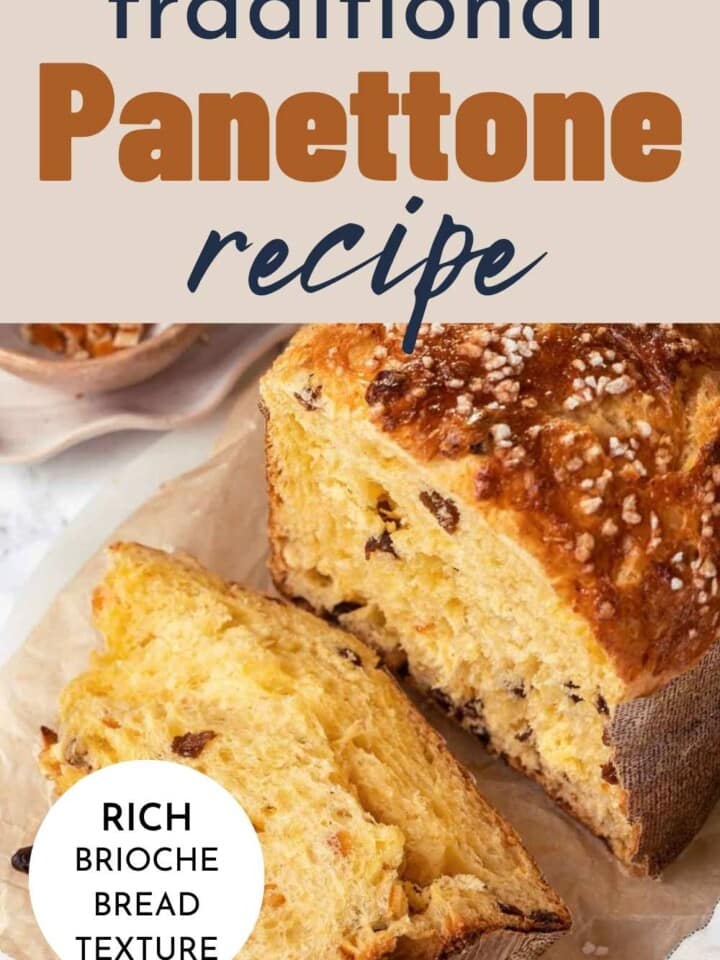


I cleared a whole Sunday to finally try this and honestly it was worth the effort. The dough was super sticky but came together beautifully once the butter went in. I did the overnight fridge proof and baked it the next morning; the rise was impressive and the crumb stayed soft for days. I sliced it thick and ate it plain all week.